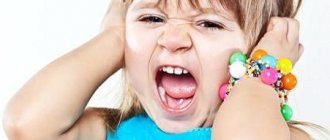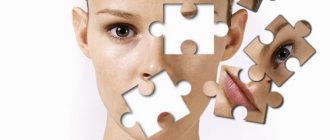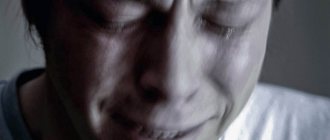Causes of neurosis
The phenomenon of neurosis is caused by many different factors of an endogenous and exogenous nature. Each type of neurosis develops against the background of psychogenic disorders resulting from conflicts and psychoneurological stress. At the same time, the social and individual significance of the person who has succumbed to the experience is important, that is, the individual experiences a neurological reaction only if there is a stimulus that passes individually. Also, one of the key factors influencing the development of neurosis is the phenotypic personality trait, determined by heredity and upbringing.
According to the results of some studies, it is known that most often the formation of a hypersthenic neurasthenic is caused by neglect and poor upbringing, and a hyposthenic neurasthenic is formed if the personality is subject to oppression in the process of its development. With excessive attention from loved ones, there is a high risk of developing hysteria. If a person does not have any neurotic tendencies, then psycho-emotional overloads can provoke neurotic states, vegetoneurosis or reactive states; however, without a constitutional predisposition of the person, such types of neuroses as obsessional neurosis or hysteria usually do not develop.
Risk factors for the development of neuroses include:
- somatic diseases;
- physical stress;
- injuries;
- professional dissatisfaction;
- uncontrolled use of sleeping pills and tranquilizers;
- alcohol abuse;
- trouble in the family.
A special place in the clinic of neuroses is given to changes in the vegetative-endocrine system and homeostasis that arose as a result of close connections between the higher vegetative centers and the psycho-emotional sphere.
Symptoms
The symptoms of all neurotic conditions and stable neuroses are very similar, since they all manifest themselves in a similar way.
This may be emotional instability, when the mood “jumps” from plus to minus and vice versa. It is always strange to observe this in adults, which indicates the presence of a problem that needs to be treated with medication. Manifestation of anxiety, when everything is outwardly good and calm, irritability towards surrounding people and circumstances indicate a disorder of the nervous system. It becomes difficult for adults to control not only their internal feelings, but even their behavior, as unjustified aggression increasingly begins to manifest itself and take its place in life. These include fears, suspiciousness about health, the desire to cry for no reason. Physical symptoms include problems with the intestinal tract, constipation and diarrhea with a normal healthy diet. Reluctance to eat food, insomnia during night rest, daytime apathy and lethargy, vomiting, changes in pulse and blood pressure disturbances may also occur. It is not necessary to have all of these symptoms for a clear diagnosis to be made. It is enough to have several in intense manifestation.
Pathogenetic aspects of neuroses
Today, most scientists believe that the basic role in the pathogenesis of neurosis is assigned to dysfunction of the limbic-reticular complex, in particular, the hypothalamic part of the diencephalon. Failure in the functioning of the limbic-reticular complex in neuroses is often combined with neurotransmitter disorders. This is evidenced by the insufficiency of the noradrenergic systems of the brain, which is one of the links in the mechanism of anxiety development.
There is also an opinion that pathological anxiety is associated with the abnormal development of GABAergic and benzodiazepine receptors or a decrease in the amount of neurotransmitters that affect them. This hypothesis is confirmed by the positive dynamics in the treatment of anxiety with benzodiazepine tranquilizers. The pathogenetic connection of neurosis with a disorder of serotonin metabolism in brain structures is evidenced by the positive effect of antidepressant therapy.
Classification of neuroses
The fact that neuroses are represented by diseases in which the absence of visible pathomorphological changes in the nervous system is combined with neuropsychic dysfunction does not at all exclude the material substrate of neuroses, since they develop subtle transient changes in nerve cells and metabolic processes at various levels of the nervous system. In the medical literature there are a large number of different classifications of neuroses. Most often in clinical practice, neuroses are divided according to their form and the nature of their course. Depending on the form, the following neuroses are distinguished:
- hysteria (hysterical neurosis);
- neurasthenia;
- motor and autonomic neuroses;
- obsessive-compulsive neurosis;
- neurosis syndrome (neurosis-like conditions).
Based on the nature of their course, the following types of neuroses are known:
- acute neurosis;
- reactive state (neurotic reactions);
- neurotic development.
Difference from neuroses
Neurosis-like conditions and neuroses have the same manifestations and symptoms. The difference between them lies in the nature of the appearance.
Neuroses appear as a result of prolonged stressful situations that deplete the nervous system, cause anxiety, and autonomic disorders. Neurosis-like conditions do not have psychological causes. They belong to organic diseases. Previously, they were called “organelles”.
The cause of such disorders is mild cerebral pathology caused by pathologies of intrauterine development, or resulting from previous diseases.
Hysteria
Hysterical neurosis (hysteria) is a rather complex disease; it is based on behavioral characteristics that depend on the increased suggestibility and emotionality of the individual. The risk group for hysteria includes women aged 20-40 years, although this disease also occurs in men. One of the behavioral features of patients with hysterical neurosis is their desire to be the center of attention of others, to evoke admiration, surprise, envy, etc. The increased emotionality of patients affects all assessments and judgments, as a result of which they become extremely unstable and changeable.
Manifestations of various types of neuroses in children
There are quite a few types of neuroses in children; different psychological and neurological schools give different classifications. Let's consider the simplest classification of neuroses according to their clinical manifestations.
Anxiety neurosis or fear neurosis
It can manifest itself in the form of attacks of fear, which often occur when falling asleep or alone, and can sometimes be accompanied by visions. Children at different ages may have different fears:
- Among preschoolers, fears of being left alone in the house, fear of the dark, characters in scary cartoons or films, and programs are common. Often, fears are cultivated by parents themselves, frightening children for educational purposes with frightening characters - a woman, an evil witch, a policeman.
- For younger schoolchildren, this may be fears of school or bad grades, a strict teacher, or older students. Often these children skip classes due to fear.
Manifestations of this neurosis can result in a bad mood, reluctance to be alone, changes in behavior, and in difficult cases, urinary incontinence occurs. Often, such neurosis occurs in sensitive children at home who had little contact with their peers during preschool age.
Obsessive-compulsive disorder in children
It can occur in the form of neurosis of obsessive actions (obsessions) or phobic neurosis, as well as with the presence of both phobias and obsessive actions at the same time.
Obsessive actions are involuntary movements that occur during emotional stress against the child’s wishes; he can:
- blink, twinkle
- wrinkle your nose
- shudder
- tap your foot
- cough
- to sniff
A nervous tic is an involuntary twitching that occurs more often in boys, triggered by both psychological factors and the presence of certain diseases. Initially justified actions against an unfavorable background are then consolidated as obsessions:
- With eye diseases, habits of blinking, blinking, and rubbing the eyes may become established.
- With frequent colds and inflammation of the upper respiratory tract, sniffing or coughing may become more common.
They usually appear after 5 years. Such tics affect the facial muscles, neck, upper limbs, can be from the respiratory system, combined with urinary incontinence or stuttering. Such repeated actions of the same type can cause discomfort to the child, but most often they become habitual and he does not notice them. Read more about the causes and treatment of nervous tics in children.
As a rule, the tendency to neuroses begins at an early age, when stressful habitual pathological actions are formed and consolidated:
- nail biting or thumb sucking
- touching the genitals
- rocking of the body or limbs
- twirling hair around fingers or pulling it out.
If such actions are not eliminated at an early age, they contribute to neurosis due to stress in older children.
Phobic manifestations are usually expressed in the form of a special fear of:
- fear of death or illness
- confined spaces
- various objects, dirt.
Often children form special thoughts or ideas that contradict the principles of education and morality, and these thoughts create anxieties, worries, and fears in them.
Depressive neuroses
They are not typical for children; children of school age are usually prone to them, especially during puberty. The child strives to be alone, withdraws from others, and is constantly in a depressed mood with tearfulness and decreased self-esteem. Physical activity may also decrease, insomnia occurs, appetite worsens, facial expressions are inexpressive, speech is quiet and meager, and there is constant sadness on the face. This condition requires special attention, as it can lead to serious consequences.
Hysterical neuroses
Preschoolers are prone to them when there is a discrepancy between the desired and the actual. They usually fall with screams and screams on the floor or surfaces, hitting their limbs and head against hard objects. Attacks of passion may occur with imaginary suffocation or hysterical coughing, vomiting if the child is punished or does not do what he wants. In older children, analogues of hysteria may occur in the form of hysterical blindness, skin sensitivity disorders, and breathing disorders.
Neurasthenia
It is also called asthenic neurosis and occurs in schoolchildren as a result of excessive stress at school itself or an excess of additional clubs. It often occurs against a background of general weakness in children due to frequent illness or physical lack of training. Such children are disinhibited and restless, they get tired quickly, are irritable and cry often, and may have difficulty sleeping and eating.
Hypochondria
Children become concerned about their condition and health, and have unmotivated fears of developing various diseases; this often occurs among teenagers with a suspicious character. They look for symptoms and manifestations of various ailments, worrying about it, getting nervous and upset.
Neurotic logoneurosis - stuttering
Stuttering or logonerosis of a neurotic nature is more typical for boys under five years of age during the period of active development of speech and the formation of phrasal conversation. It occurs against the background of psychological trauma against the backdrop of family scandals, separation from loved ones, acute psychological trauma or fear, fright. Information overload and forced formation by parents of speech development and general development may also be reasons. The child's speech becomes intermittent with pauses, repetition of syllables and the inability to pronounce words.
Somnambulism - sleepwalking, sleep talking
Neurotic sleep disorders can occur in the form of a long and difficult time falling asleep, restless and anxious sleep with frequent waking up, the presence of nightmares and night terrors, talking in sleep and walking at night. Sleepwalking and sleep-talking are associated with the characteristics of dreams and the functioning of the nervous system. It often occurs in children from the age of 4-5 years. Children may not remember in the morning that they walked or talked at night. Read more about sleepwalking in children and adolescents.
Anorexia nervosa
Appetite disturbances in childhood are a common occurrence in both preschoolers and adolescents. Usually the reasons are overfeeding or force-feeding, the coincidence of meals with scandals and quarrels in the family, and severe stress. At the same time, the child may refuse any food or some types of it, he chews for a long time and does not swallow food, and is extremely suspicious of the contents of the plate, even to the point of gag reflex. At the same time, against the background of poor nutrition, mood changes, whims at the table, crying and hysterics are expressed.
Some variants of neuroses are:
- childhood neurotic enuresis (urinary incontinence)
- encopresis (fecal incontinence).
They arise against the background of hereditary predisposition and possibly diseases. They require a special approach in treatment, and the mechanisms are not yet fully understood.
Neurasthenia
Neurasthenia is overwork, nervous exhaustion. It is expressed by a combination of fatigue and increased irritability. With this form of neurosis, patients are characterized by inadequate reactions to minimal stimuli, as well as the inability to suppress them. Neurosthenics may be irritated by too loud a conversation, bright light, etc.; they often complain of bursting headaches and heaviness in the head. In addition, somatic symptoms are added: loss of appetite, sweating, bloating, tachycardia, polyuria, sleep disorders (difficulty falling asleep). Neurasthenia can be hyposthenic (depressive) and hypersthenic (irritable).
Obsessive-compulsive disorder
Patients with obsessive-compulsive disorder have general neurological symptoms and obsessive-phobic manifestations. Often the clinical picture of this form of neurosis is expressed by cardiophobia (obsessive fear of cardiac pathologies), cancerophobia (fear of cancer pathologies), claustrophobia (fear of enclosed spaces), etc. General neurological signs of this disease include poor sleep, deterioration of mood, irritability.
Neurosis-like conditions develop against the background of general somatic pathologies, intoxication, trauma, infection, while neurasthenic disorders are less pronounced in nature compared to the symptoms of other forms of neurosis.
The influence of sport on the body during neurosis
There are many cases when people with neurosis are simply afraid to create sports activities for themselves, so as not to cause frightening symptoms and aggravate the course of the disease.
Usually they are frightened by physical signs, such as an accelerated pulse, rapid breathing, sweating, which in fact is a common occurrence in sports even in completely healthy people. But those who suffer from obsessions often mistake natural manifestations for signs of panic syndrome. Therefore, sport becomes a forbidden activity for neurotics. In fact, such a judgment is extremely wrong. Indeed, due to the absence of the slightest load, the body becomes weak and sluggish, the muscles lose their shape, and the nervous system becomes more vulnerable to various kinds of stress. Naturally, not every sport is beneficial for neurotics. Difficult, dangerous and overly active sports activities can damage the psyche and regularly create traumatic situations. The body will quickly wear out and be subject to stress. Therefore, it is worth engaging in such varieties that do not pose any danger, are simple and enjoyable loads. This includes cycling, skiing and skating, playing tennis, slow running, and also swimming and aerobics with a light program.
You shouldn’t immediately rush into big sports and overload yourself with exorbitant activities. This will only make the condition worse. To begin with, you can generally do ordinary exercises, but do the exercises every day so that a positive habit is developed, and the body can quickly feel the comfort of such a lifestyle.
Stages of development of neurosis
There are three main stages in the development of neurosis. The main distinguishing feature of the first two stages from the third is the high probability of complete elimination of the disease in the conditions of appropriate treatment tactics. In the absence of quality medical care and prolonged exposure to a traumatic stimulus, the third stage of neurosis develops. At the third stage of neurosis, changes in personality structure become persistent and even with a competent approach to treatment, these personality disorders persist.
At the first stage of the development of neurosis, neurotic dysfunction occurs as a result of acute psychotrauma and is short-term in nature (no more than one month). Most often, the first stage of neurosis manifests itself in childhood. In some cases, neurotic disorders can also occur in mentally healthy people.
The long course of a neurotic disorder develops into a neurotic state, which is represented by neurosis itself. At the same time, personal characteristics undergo significant changes.
Treatment of the disease
To cure a neurosis-like syndrome, you need an integrated approach and professional diagnosis. It is important to find the organic cause of the disease and first of all treat it, and then, to ease the child’s mental health, work with a child psychologist.
At the first stage of treatment, the child undergoes examinations such as an electroencephalogram, magnetic resonance imaging, consultations with an endocrinologist, gastroenterologist and cardiologist are necessary. After determining the cause of the nervous disorder, the doctor prescribes treatment for the organic disease. When it disappears, the neurosis-like syndrome will no longer bother you. A sick child undergoes rehabilitation in several stages:
- Treatment with medications involves eliminating the cause of the disease (organic, somatic or infectious), correcting the functioning of the brain and hypothalamus. Drugs that reduce excitability, aggression, and antidepressants are also prescribed.
- Neurologists often prescribe physical therapy. In case of asthenic condition (hyperactivity syndrome), general restoratives are recommended: electrophoresis with calcium, diphenhydramine, bromine, magnesium sulfate, aminazine using the collar method (for stuttering), electrosleep.
- It is important to pay attention to psychological help, conduct classes with a speech therapist, and art therapy.
- A very important role in the treatment of a child is played by the psychological situation in the family, unity of upbringing, support, praise of the child, a positive, friendly atmosphere, and the correct daily routine of the child. In this case, both mom and dad should consult with a specialist to develop a common model of behavior.
Finally, it must be emphasized that the main reason for the difference between a neurosis-like syndrome and a neurosis is the lack of connection between the disease and psychological trauma, and medications play an important role in treatment.
But complete recovery is possible only with an integrated approach, including an impact on both the physical and psychological health of the child.
General symptoms of neuroses
Common signs of neuroses can be various neurological dysfunctions, most often they are represented by tension headaches, dizziness, hyperesthesia, a feeling of instability while walking, tremors of the limbs, muscle twitching and paresthesia. Also, patients with neurosis often experience sleep disturbances in the form of hypersomnia or insomnia. Permanent or paroxysmal disorders may develop on the part of the autonomic nervous system.
In case of damage to the cardiovascular system due to neurosis, patients complain of a feeling of discomfort or pain in the heart area. Objectively, such patients have a heart rhythm disturbance in the form of tachycardia or extrasystole, arterial hypotension or hypertension, Raynaud's syndrome, pseudocoronary insufficiency syndrome. Respiratory disorders are expressed by a feeling of suffocation or a lump in the throat, lack of air, yawning and hiccups, as well as fear of suffocation.
Disorders of the digestive system against the background of neuroses include heartburn, vomiting, nausea, loss of appetite, constipation, diarrhea, flatulence and abdominal pain of unknown origin. Genitourinary disorders manifest themselves in the form of enuresis, cystalgia, itching in the genital area, pollakiuria, decreased libido, as well as erectile dysfunction in men. Often one of the symptoms of neurosis may be chills, low-grade fever and hyperhidrosis. The skin of neurotic patients may become covered with a rash such as psoriasis, urticaria, or atopic dermatitis.
One of the typical symptoms of neurosis is asthenia, which is expressed not only by mental, but also by physical fatigue. Patients may be bothered by various phobias and constant anxiety, and some of them are susceptible to dystomia (decline in mood, with feelings of melancholy, grief, sadness, despondency).
Neuroses are often associated with mental disorders in the form of forgetfulness, inattention, deterioration of memory and inability to concentrate.
Clinical picture
The symptoms of a neurosis-like condition are very similar to the symptoms of neurosis, so only a qualified specialist can make a correct diagnosis after an examination.
Parents need to pay attention to the following symptoms:
- Hyperactivity with motor disinhibition syndrome, attention deficit.
- Nightmares, fears, phobias.
- Depression, tearfulness, aggression.
- Anxiety, restlessness, increased heart rate and pulse.
- Nausea and vomiting when eating (anorexia nervosa).
- Problems with bowel movements (frequent diarrhea or constipation).
- Urinary incontinence (enuresis), after the baby has already been potty trained, stuttering, nervous tics.
- Increased sweating or dry skin.
- The child gets tired quickly, complains of lack of strength, low muscle tone.
Hyperactivity occurs in 20-35% of children after organic brain damage before or during childbirth. Such children have increased motor activity, poor concentration, clumsiness, absent-mindedness, and are very excitable.
The response to any comments will be crying, hysterics, screaming. The general development of the first year of life is going well, they are active, learn everything quickly, and are inquisitive.
With neurosis, the child sleeps poorly, is afraid to be alone in the room, is afraid of the dark, and comes up with scary stories himself. He is not interested in anything specific, cannot occupy himself, whines, trying to attract attention by any means. Sometimes shows unreasonable aggression towards others.
Nervous tics mean unconscious twitching of hands, blinking, raising eyebrows, shuddering, shrugging shoulders as a reaction to some alarming, unpleasant situation for the child.
Tics are often monotonous and of the same type, and if you pay attention to them, the child can stop them. If a child exhibits several of these symptoms for a long time, you should consult a neurologist, as the cause may be more serious than it seems at first glance.
Diagnosis of neurosis
Diagnosis of neuroses consists of several stages. The first is taking an anamnesis. In the process of interviewing the patient, information is found out about hereditary predisposition to this group of diseases, previous events in the patient’s life that could have caused the disease.
In addition, during the diagnostic process, psychological testing of the patient, pathopsychological examination, and personality structure studies are carried out.
The neurological status of a patient with neurosis implies the absence of focal symptoms. During the examination, tremor of the upper extremities may be visualized when they are pulled forward, hyperhidrosis of the palms and a general revival of reflex reactions. In order to exclude cerebropathologies of vascular or organic origin, a number of additional studies are performed (ultrasound of the vessels of the head, MRI of the brain, EEG, REG). In case of severe sleep disorders, a consultation with a somnologist is recommended, who will decide on the advisability of polysomniography.
The complex of diagnostic measures necessarily includes differential diagnosis, the main task of which is to exclude diseases with a similar clinical picture (bipolar disorder, schizophrenia, psychopathy); similar manifestations occur not only in psychoneurological disorders, but also in somatic diseases (cardiomyopathy, angina pectoris, chronic gastritis, glomerulonephritis, etc.), which also need to be excluded in the process of differential diagnosis. The main difference between patients with neurosis and psychiatric patients is their awareness of the disease, an accurate description of the symptoms and the desire to eliminate these pathological phenomena. Sometimes a psychiatrist may be brought in to clarify the diagnosis. In some cases, you need the help of specialists from other categories of medicine (gynecologists, urologists, gastroenterologists, cardiologists, etc.), as well as ultrasound of the abdominal organs, bladder, ECG, FGDS, etc.
Treatment methods
In order to effectively cure neurosis or a neurosis-like condition, you should avoid as much as possible everything that injures the nervous system and psyche. To begin with, a comprehensive diagnosis is carried out, which includes tomography, consultation with a neurologist, electroencephalogram, as well as examination by many specialists, such as a cardiologist, gastroenterologist and others. This is necessary in order to understand the true cause of the disease and find out whether it lies in diseases of other organs. Neuroses are treated with medication. They take sedatives, also those that affect blood pressure and normalize it. In addition to medications, physical procedures are necessary, without which general treatment may become ineffective. This is electrosleep, physiotherapy in the form of electrophoresis. Neurosis can be cured with the help of psychotherapy, in contrast to neurotic conditions, where treatment should all be aimed at physiology. It is definitely worth including therapeutic exercises, since without sports it is impossible to get rid of many problems even with the nervous system, not to mention diseases of the body. You shouldn’t overload yourself: you should follow the correct regime so that your rest is complete and constant. You should also eat healthy and forget about snacking. Sometimes it makes sense to go to a sanatorium for treatment, changing the environment, which will be very useful for the nervous system. It is advisable to protect yourself from stress and, if possible, quit an annoying job, change your social circle and forever forget about bad habits, which, like nothing else, negatively affect the nerves.
Treatment of neurosis
Today, a large number of methods for treating neuroses are used in clinical practice. They apply an individual approach to treatment, depending on the characteristics of the patient’s personality and the form of neurosis; they may prescribe group psychotherapy, psychotropic and restorative drug therapy. It is very important to get enough rest. For a positive effect from treatment measures, it is necessary to exclude the cause of the disease, which requires changing the environment that provoked it. If it is not possible to completely eliminate the cause of neurosis, all efforts are aimed at reducing its significance, this is achieved through the use of various psychotherapy techniques.
In the case of vegetative neurosis, obsessive-compulsive neurosis, neurosis-like reactions and neurasthenia, the optimal treatment method will be persuasion psychotherapy (rational psychotherapy). To eliminate motor neuroses and hysteria, it is advisable to use the method of suggestion, both in the patient’s state of hypnotic sleep and during waking moments. Quite often, auto-training is used for various forms of neurosis. During autogenic training, the doctor selects the necessary phrases, which in the future the patient independently repeats for 15-20 minutes. It is recommended to perform auto-training twice a day, in the morning and evening; at this time it is better to be in a separate room. The patient should be in a lying or sitting position and completely relaxed. An auto-training session most often begins with phrases like these: “I’m calm, I’m relaxed, I’m resting, I’m completely calm. I feel warmth and heaviness in my limbs. My nervous system is resting,” etc. This is followed by verbal formulas aimed at various disorders - irritability, poor sleep, headache, shortness of breath, etc. The session ends with an expanded formula of calm, which instills an understanding that the patient is becoming calmer, more self-confident and this state is becoming stable. Self-hypnosis can be used at home and it is not necessary to place the patient in a hospital. After such treatment, a good rest is recommended; for this, the patient may be sent to a sanatorium resort.
In the case of severe forms of hysteria and motor neuroses, hospital treatment is mandatory.
Drug treatment of neurosis is based on the neurotransmitter aspects of its origin. Medications help the patient to make it easier to work on himself during psychotherapy and record the results achieved. In addition to medications, the mechanism of action of which is aimed at eliminating disorders of the nervous system, general restorative therapy is also provided, which includes multivitamins, glycine, adaptogens, as well as reflexology and physiotherapy.
Types of neurosis-like conditions
Asthenic syndrome.
This is one of the most common neurosis-like conditions that a person can experience. It does not appear immediately; it develops gradually, increasing and worsening the patient’s well-being. At first, you may experience severe fatigue and a constant desire to lie down, sit down, and rest after minimal exertion. At the same time, emotional instability manifests itself when a person himself cannot control his emotions. After strong irritability comes an apathetic state when you don’t want anything and don’t need anything. A person may distort reality and have an incorrect assessment of current events. Such people have a very difficult time tolerating too bright stimuli, such as strong light, loud sound and unpleasant smell. At night I don’t want to sleep, but during the day I constantly feel sleepy. Even physical aspects such as heart pain and headaches can manifest themselves. Inside there is a feeling of constant anxiety and expectation of bad things, although no real factor contributes to this. All these manifestations become especially aggravated during sudden changes in weather and season.
Obsessive-compulsive syndrome.
It manifests itself as obsessive thoughts, movements, unreasonable fears, which are difficult to get rid of, even thinking logically. At the same time, the patient understands everything and can evaluate his condition as strange and stupid, but physically he cannot cope with it. Some people with a strong will can, by constantly controlling themselves, get rid of obsessive states. But this may not last long, since without proper treatment of the nervous system, everything can come back again. Such conditions are precursors to depression, neuroses and various psychopathic diseases.
Hysterical syndrome.
A person with such a syndrome will behave brightly, and sometimes even too defiantly. He will play to the public, express his emotions and behave demonstratively, drawing considerable attention to himself. His gestures are broad and attention-grabbing. Emotions may include loud laughter, crying, exclamations, and even fainting. In fact, such manifestations have nothing to do with real hysteria, when a person cannot control himself. In fact, this is just an imitation of a seizure. Unfortunately, this syndrome is not very harmless: as a result of these manifestations, deafness and blindness, as well as paralysis, can even develop.
Hypochondriacal syndrome.
The patient may be completely healthy and have no problems other than with the nervous system. And at the same time, he will constantly fear for his well-being, listen anxiously to himself and not find peace during the day, worrying about the slightest pain or unpleasant sensation in the body. At the same time, he is very suspicious and invents many diseases for himself. Most often, such people spend days in hospital queues, visiting all kinds of specialists in order to identify at least one far-fetched ailment. They undergo diagnostics, undergo consultations and constantly complain about their health, although there may be no real reasons for this.










